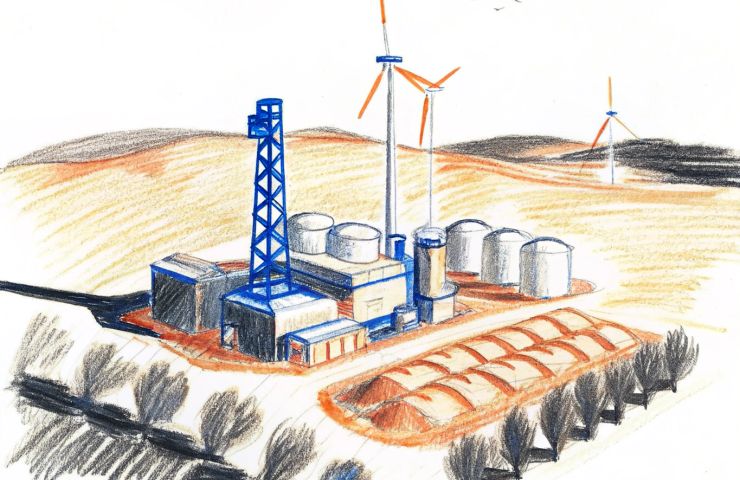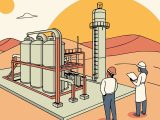
HIF Global’s Haru Oni e-Fuels Plant Earns EU RFNBO Hydrogen Certification
October 2, 2025Picture this: you’re shipping gasoline across oceans and there’s literally zero carbon hitchhiking along. No soot. No fossil baggage. That’s the future HIF Global’s Haru Oni unlocked in Chile’s wind-whipped Magallanes region. On September 18, 2025, this trailblazing site snagged the world’s very first EU RFNBO certification for e-gasoline made outside Europe. And it’s more than just a trophy—it’s living proof that synthetic fuels can go head-to-head with the regular stuff, meeting Europe’s toughest sustainability bar and primed to power tomorrow’s cleaner world.
E-fuels (or electrofuels) have danced on the edge of “maybe” for about a decade now, hinging on breakthroughs in electrolysis and CO₂ capture. They promise zero-emission fuel for the sectors that stubbornly resist electrification—think aviation and heavy transport. Thanks to Europe’s RED II and RED III directives demanding rock-solid rules on additionality, timing, and greenhouse gas cuts, pilots are turning into real-world plants. And Haru Oni? It’s the poster child showing policy can actually spark production.
History & Partnerships
HIF Global kicked off the Haru Oni journey alongside the University of Magallanes and Empresas Gasco, aiming to turn Chile’s far south into a living renewable lab. They locked down ISCC PLUS certification back in 2023 and lined up distributors like Mabanaft. Long before RFNBO standards even existed, they were busy pioneering financing models, marrying technologies, and tracing supply chains—proving green hydrogen and synthetic fuels could graduate from the lab bench to heavy-duty reality.
Decoding RFNBO
Renewable Fuels of Non-Biological Origin (RFNBO) is the EU’s gold stamp for synthetic fuels. Unlike biofuels, RFNBOs spring purely from green hydrogen and captured CO₂. To wear this badge, producers have to tick every box:
- Additionality: tapping power from brand-new renewables
- Time-matching: syncing consumption with clean production profiles
- Grid-correlation: tying electrolysers into the same grid zone
Hit these marks, and your carbon accounting is ironclad. On top of that, RFNBO-certified fuels must slash lifecycle greenhouse gases by at least 70% compared to fossil gasoline. With that certification in hand, Haru Oni can slide directly into Europe’s fuel quotas—no shortcuts.
Why Magallanes?
The Magallanes region—population roughly 166,000—might not scream “industrial hotspot,” but its howling, steady winds rank among the world’s best for hydrogen production. This windswept corner of Chile, steeped in a legacy of resource development, has the pioneering spirit and political will for big green projects. With a per-capita income near USD 16,000, local leaders have been all in on ventures that promise skilled jobs and sustainable energy growth.
A Tour of the Technology
Step onto the Haru Oni site and you’re met with a seamless assembly line of cutting-edge gear. First up: rows of Siemens Gamesa 3.4MW wind turbines that rip energy from the breezes. That juice powers a bank of Silyzer 200 electrolysers (courtesy of Siemens) to split water into hydrogen and oxygen. The hydrogen then teams up with CO₂ in a catalytic methanol reactor, before heading to a second unit that transforms methanol into premium e-gasoline. It’s a textbook showcase of integrated technology, running non-stop to prove the industrial-scale concept.
CO₂ Sourcing and the Carbon Loop
Right now, Haru Oni taps CO₂ from nearby fermentation plants and industrial off-gases—a smart, cost-savvy move for its early days. But the grand plan includes a direct air capture unit to pull CO₂ straight from the atmosphere. Once that’s online, the facility will close the loop entirely: catch emissions only to spin them back into fuel. That circular mindset is exactly what the world needs for true industrial decarbonization.
From Facility to Fuel Market
That EU RFNBO certification isn’t just a badge—it’s a commercial edge. European fuel suppliers face strict renewable quotas, and missing the mark means fines or pricey credits. Haru Oni’s e-gasoline, stamped with the ISCC EU RFNBO label, slots right into those mandates. And with partners like Mabanaft covering global distribution, HIF Global can tap markets from Europe to Japan and Canada using its ISCC PLUS standing. Smart move: secure market access before your rivals even break ground.
Setting the Pace Worldwide
Haru Oni’s win in Chile is sending shockwaves across the globe. HIF Global is already planning twin projects in the US, Australia, and Uruguay—each aiming for RFNBO certification. By cracking Europe’s toughest code first, they’ve written the operational playbook, smoothing the policy and logistics hurdles for the next wave. For investors, it’s a signal flare: synthetic fuel plants outside Europe can play by EU rules, unlocking multi-billion-dollar export opportunities.
Local Economic Ripples
In Magallanes, the benefits are real and ongoing. Construction drew in hundreds of workers—civil engineers, electricians, welders—while daily operations now employ plant operators, logistics teams, and R&D staff. The University of Magallanes is cooking up related research programs, and Empresas Gasco keeps the regional supply chain humming. But it’s not all smooth sailing: land-use debates and environmental reviews have paused some turbine expansions, a reminder that big renewable builds must juggle community chatter and ecosystem care.
Challenges on the Horizon
Even with a shiny RFNBO certificate, scaling e-fuels is no walk in the park. Hooking massive electrolysers into the grid demands upgrades and tricky balancing acts. Direct air capture remains pricey and energy-hungry. As more players chase these projects, demand for clean power could spike local electricity prices. HIF Global faces a juggling act of permits, stakeholder buy-in, volatile energy markets, and capital discipline. It’s a complex puzzle, but they’ve already shown the blueprint works—now it’s about scaling smartly.
Looking Ahead
With Europe tightening its climate screws and global appetite for low-carbon fuel growing, the race is officially on. Haru Oni’s milestone shows non-EU sites can set, not just meet, the RFNBO bar. Expect a flurry of new projects, supply-chain innovations, and policy updates in the next few years. For HIF Global, the immediate mission is clear: optimize operations, slash costs, and fire up that direct air capture module. After that, the industry will be racing to keep up.
Ultimately, Haru Oni’s EU RFNBO certification is more than a checkbox—it’s a signal flare announcing the dawn of synthetic, zero-emission fuels. By weaving together world-class wind power, electrolysis, CO₂ capture, and bold partnerships, HIF Global has sketched out what’s possible when ambition meets opportunity. As we push toward a net-zero future, projects like Haru Oni will be our compass for global industrial decarbonization.
About HIF Global
Founded in Chile, HIF Global develops, builds, and operates e-fuels facilities around the world. With both ISCC PLUS and ISCC EU RFNBO certifications in its toolkit, the company teams up with top universities and fuel distributors to deliver carbon-neutral fuel using renewable electricity and captured CO₂.



 With over 15 years of reporting hydrogen news, we are your premier source for the latest updates and insights in hydrogen and renewable energy.
With over 15 years of reporting hydrogen news, we are your premier source for the latest updates and insights in hydrogen and renewable energy.